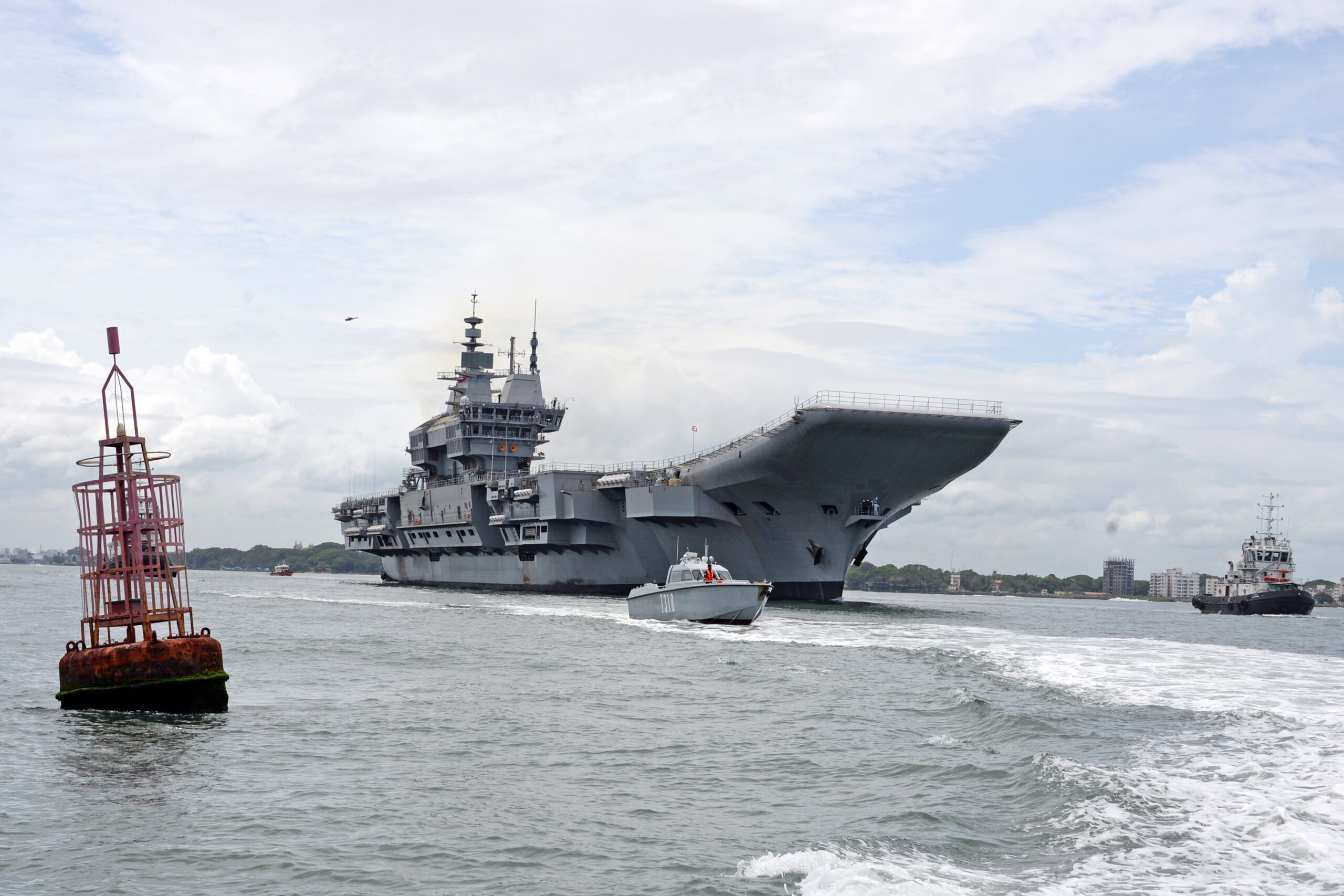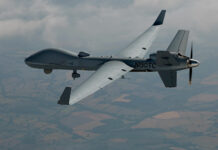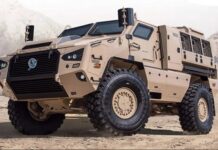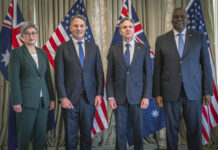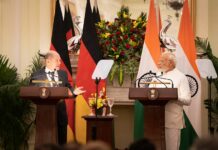India experienced its ‘Top Gun’ moment recently when two F/A-18 Block-III SUPER HORNETs from the US Navy roared over the skies of the western Indian state of Goa at Indian Naval air station, INS Hansa. By doing so, they completed their operational demonstration for the Indian Navy’s fighter jet deal for 26 aircraft valued at US$6Bn. These fighters from the American aircraft giant Boeing Defence, ‘turned and burned’ to their optimal capacity for this contest where the other contender was the French Dassault aviation’s RAFALE-M fighter, which completed its trials in January 2022.
The heated contest, which couldn’t have come at a better time with the release of the latest Top Gun movie, has had everyone’s eyes on the performance of both rivals, though interested agencies are tight-lipped about performance results. These extensive trials were held at the ski-jump platform at INS Hansa’s shore-based test facility (SBTF), in order to test operational capabilities aboard Indian aircraft carriers.
The 26 fighters would be split into 18 single-seat and eight twin-seat aircraft, in a deal to be processed through the government-to-government (G2G) route, so that further production can be carried out here in India, through licence, to facilitate the Indian Government’s flagship initiative of ‘Self-Reliant India’, popularly known as ‘Atmanirbhar Bharat’.
The Navy’s sole aircraft carrier INS VIKRAMADITYA operates Russian MiG-29K fighters, but performance dissatisfaction and multiple other issues reportedly faced by the Indian Navy is said to have forced the service into scouting for other fighters. India’s indigenous aircraft carrier (IAC-1), INS VIKRANT, currently undergoing sea trials, is all set to be commissioned into service by Prime Minister Narendra Modi on 15 August 2022, coinciding with India’s 75th Independence Day anniversary celebrations.
The Indian Navy’s initial need for 57 twin-engine deck-based fighters, reduced to 26, was for both carriers. The Indian Navy’s ex-fighter aviator, Vice-Adm Shekhar Sinha (retd) says, “These numbers are calculated based on the operational requirements, like how much ammunition is required to be dropped on target, hence how many sorties by an aircraft will be needed to achieve that etc. These calculations determine the numbers, as a specific number of fighters are kept serviceable, while others are either reserve or under maintenance, as per laid down procedure.”
RAFALE-M vs. F/A-18 SUPER HORNET
Earlier this year, the marine version of the French RAFALE, called the RAFALE-M, participated in a two-week operational demonstration, followed by two US Naval F/A-18 SUPER HORNETs undergoing a similar drill in the last week of May. Keeping the evaluation under wraps, sources have revealed that both fighters have been fairly tested within various parameters.
The twin-seater version of the RAFALE-M is believed to be capable of operating only from shore and not from a carrier, while both versions of the SUPER HORNET, single and twin seat, can operate from a carrier.
Boeing is also reportedly trying to leverage the SUPER HORNET’s interoperability aspect owing to the aircraft’s compatibility with other Indian naval assets of American origin, such as the long-range maritime reconnaissance aircraft P-8I from Boeing and the newly acquired MH-60 ROMEO anti-submarine helicopters, which will lend more potency to the F/A-18 in terms of data sharing, connectivity and communicating with other assets in the region. The F/A-18 is also said to be capable of carrying a large number of anti-ship missiles compared to the RAFALE-M.
The RAFALE-M’s advantage over Boeing’s F/A-18 stems from the fact that the Indian Air Force (IAF) has already inducted two squadrons of the fighter, with maintenance facilities for the same and may contract more RAFALEs in the future.
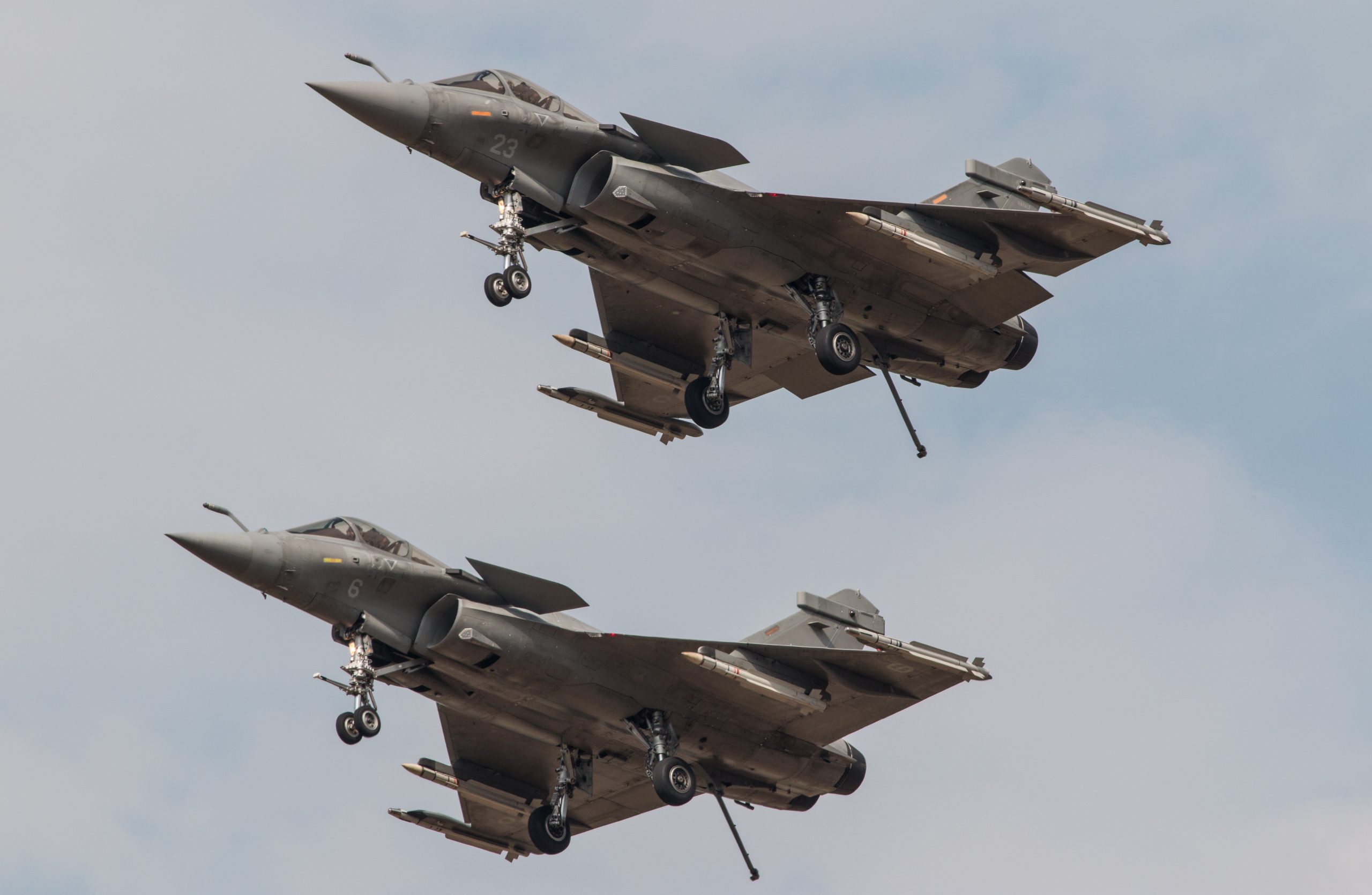
Both RAFALE-M and the F/A-18 have so far operated from nuclear-powered carriers, as American and French aircraft carriers have nuclear propulsion, unlike the two conventionally-powered carriers that India will operate, and which come with a ski-jump platform, unlike the catapult-capable American and French carriers. Vice-Adm Sinha adds, “It doesn’t matter which carrier these fighters have been operating from, as here in Goa, they were both tested from the SBTF and the most important feature to be seen was whether they could take off from a ski-jump, as the pressure is tremendous on a moving carrier.”
To qualify for the deal, the two fighters will have to demonstrate the ability to take off from a ski-jump platform. It has been reported that the F/A-18 had demonstrated the capability to take off from a ski-jump platform during trials in 2020, at the US Navy’s Patuxent River Naval Air Station in Maryland.

India’s Indigenous Naval Fighter Programmes
India’s indigenous Light Combat Aircraft (LCA) TEJAS Mk-1 naval version, called LCA-Navy, carried out its maiden landing onboard INS VIKRAMADITYA in January 2020, which was considered no mean feat. The single-engine, delta-winged LCA-Navy, which made history through this landing, is a technology demonstrator exhibiting technologies for the proposed twin-engine fighter.
The LCA-Navy programme, which began in 2003, has had its fair share of hiccups. The fighter has been plagued with design issues with the ‘nose of the aircraft’, undercarriage and landing gear, among others. The naval LCA prototype, designed by state-owned agencies like Aeronautical Development Agency (ADA), in collaboration with Aircraft Research and Design Centre ((ARDC) of Hindustan Aeronautics Limited (HAL) had its first flight in April 2012.
Over a period of time, the nose of the aircraft has been modified for better landing visibility and the undercarriage has been reinforced along with the landing gear for increased airframe stress built during carrier operations. As per reports, these alterations in the naval TEJAS carried out for carrier operations have diminished its capability to carry fuel tanks and heavy weapons under the wings, thereby reducing the jet’s combat capability.
India’s Government-owned defence research agency, the Defence Research and Development Organisation (DRDO) had offered a more powerful engine for the LCA-Navy, aimed at sorting out these issues. Meanwhile, the Indian Navy has shown reservations in accepting the LCA-Navy Mk-1 on grounds that it doesn’t meet the service requirements.
TEDBF
India has also embarked on another ambitious programme to develop a homegrown fighter for aircraft carriers — the Twin-Engine Deck-Based Fighter (TEDBF), which is progressing well and is a joint effort by DRDO and ADA. Expected to fly by 2026, the TEDBF is poised to meet the requirements of the Indian Navy’s present and future aircraft carriers. The proposal for indigenous TEDBF was confirmed by former Naval Chief Adm Karambir Singh (retd), formally at an earlier press conference, who expressed hope that the TEDBF would enter service sometime by the early 2030s. Lessons from LCA-Navy regarding under carriage and arrester hook are expected to be incorporated in the TEDBF prototype.
Regarding India’s indigenous naval fighter programme’s progress, Vice-Adm Sinha (retd), says, “We have not reached that stage to have a fully operational aircraft by ourselves. There are engine issues. Numbers also are important, only if India is going for large numbers, would there be transfer of technology and manufacturing in India would be profitable.”
Flexible Plans
The Indian Navy was initially looking to combine its fighter programme with the IAF. The IAF programme for 114 multi-role combat aircraft (MRCA), valued at US$15Bn, was recently brought down to 54 after a Government decision. Under the IAF deal, 18 aircraft are meant to be bought off-the-shelf, while 36 are to be manufactured in India under a joint venture with the foreign Original Equipment Manufacturer (OEM) to sustain the ‘Make in India’ policy. It is largely perceived that a combined deal would increase numbers for the manufacturer and enhance chances of putting up a manufacturing plant in India by the foreign OEM, in a bid to economise the deal for both sides, if both services zero in on a common fighter.
The Indian Navy’s fighter deal has been reduced to 26 from its initial projection of 57 made in 2017, for budgetary reasons. Hence, the combined programme was aimed at economy and logistics. The IAF, which is already operating two squadrons of the 36 French RAFALEs purchased under a 2015 deal, has two separate simulator bases for training purposes, which are functional, and they can be used if the Navy goes in for the RAFALE-Ms.
According to a widely held perception, it is believed that in a combined IAF-Navy deal, the French Dassault RAFALEs stand a greater chance of winning, as the IAF’s feedback about the RAFALE performance has been good, and the Boeing SUPER HORNETs have the edge if the Navy decides to go it alone with its own fighter procurement process rather than aligning itself with the IAF.
Suman Sharma


